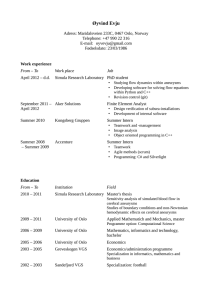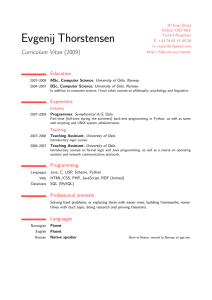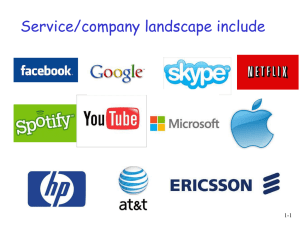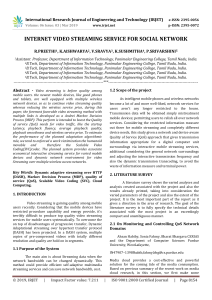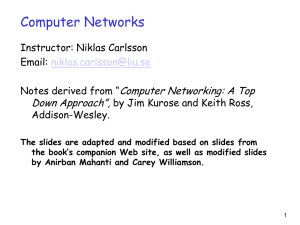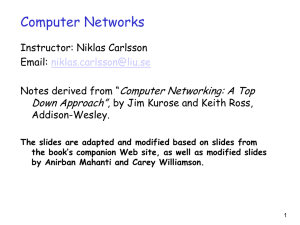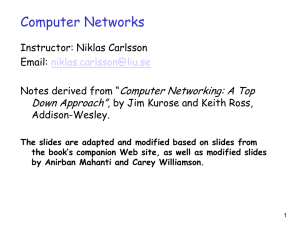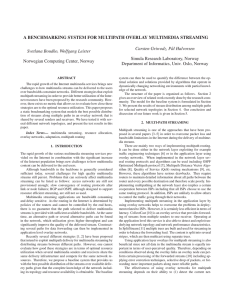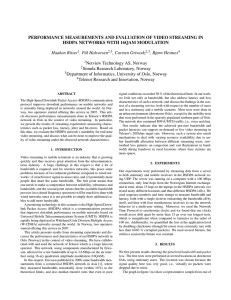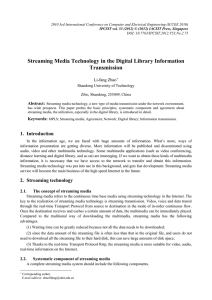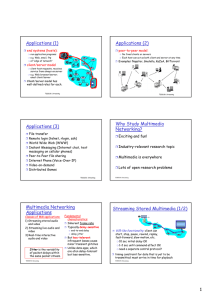Video Streaming: History, Current Trends and Future Visions Keynote
advertisement
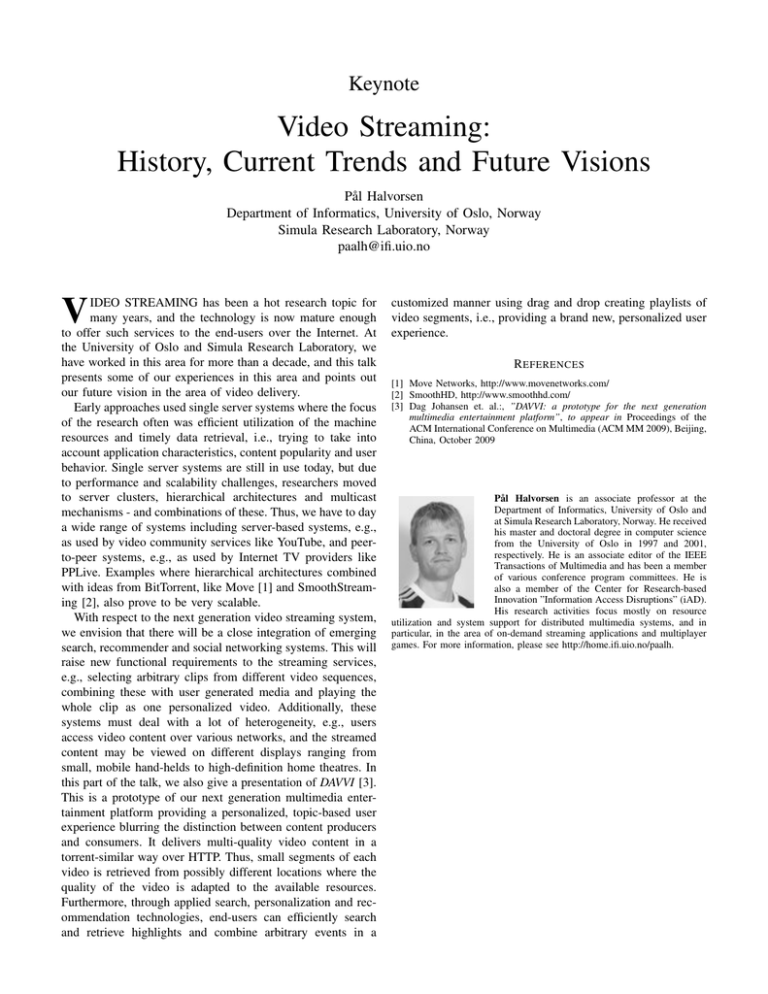
Keynote Video Streaming: History, Current Trends and Future Visions Pål Halvorsen Department of Informatics, University of Oslo, Norway Simula Research Laboratory, Norway paalh@ifi.uio.no V IDEO STREAMING has been a hot research topic for many years, and the technology is now mature enough to offer such services to the end-users over the Internet. At the University of Oslo and Simula Research Laboratory, we have worked in this area for more than a decade, and this talk presents some of our experiences in this area and points out our future vision in the area of video delivery. Early approaches used single server systems where the focus of the research often was efficient utilization of the machine resources and timely data retrieval, i.e., trying to take into account application characteristics, content popularity and user behavior. Single server systems are still in use today, but due to performance and scalability challenges, researchers moved to server clusters, hierarchical architectures and multicast mechanisms - and combinations of these. Thus, we have to day a wide range of systems including server-based systems, e.g., as used by video community services like YouTube, and peerto-peer systems, e.g., as used by Internet TV providers like PPLive. Examples where hierarchical architectures combined with ideas from BitTorrent, like Move [1] and SmoothStreaming [2], also prove to be very scalable. With respect to the next generation video streaming system, we envision that there will be a close integration of emerging search, recommender and social networking systems. This will raise new functional requirements to the streaming services, e.g., selecting arbitrary clips from different video sequences, combining these with user generated media and playing the whole clip as one personalized video. Additionally, these systems must deal with a lot of heterogeneity, e.g., users access video content over various networks, and the streamed content may be viewed on different displays ranging from small, mobile hand-helds to high-definition home theatres. In this part of the talk, we also give a presentation of DAVVI [3]. This is a prototype of our next generation multimedia entertainment platform providing a personalized, topic-based user experience blurring the distinction between content producers and consumers. It delivers multi-quality video content in a torrent-similar way over HTTP. Thus, small segments of each video is retrieved from possibly different locations where the quality of the video is adapted to the available resources. Furthermore, through applied search, personalization and recommendation technologies, end-users can efficiently search and retrieve highlights and combine arbitrary events in a customized manner using drag and drop creating playlists of video segments, i.e., providing a brand new, personalized user experience. R EFERENCES [1] Move Networks, http://www.movenetworks.com/ [2] SmoothHD, http://www.smoothhd.com/ [3] Dag Johansen et. al.:, ”DAVVI: a prototype for the next generation multimedia entertainment platform”, to appear in Proceedings of the ACM International Conference on Multimedia (ACM MM 2009), Beijing, China, October 2009 Pål Halvorsen is an associate professor at the Department of Informatics, University of Oslo and at Simula Research Laboratory, Norway. He received his master and doctoral degree in computer science from the University of Oslo in 1997 and 2001, respectively. He is an associate editor of the IEEE Transactions of Multimedia and has been a member of various conference program committees. He is also a member of the Center for Research-based Innovation ”Information Access Disruptions” (iAD). His research activities focus mostly on resource utilization and system support for distributed multimedia systems, and in particular, in the area of on-demand streaming applications and multiplayer games. For more information, please see http://home.ifi.uio.no/paalh.
